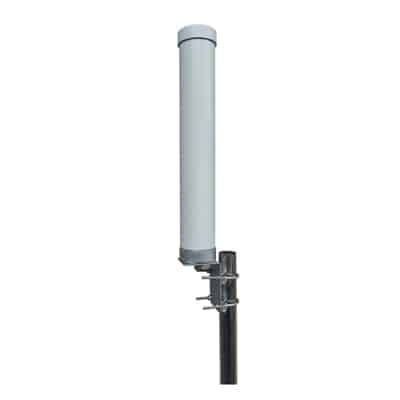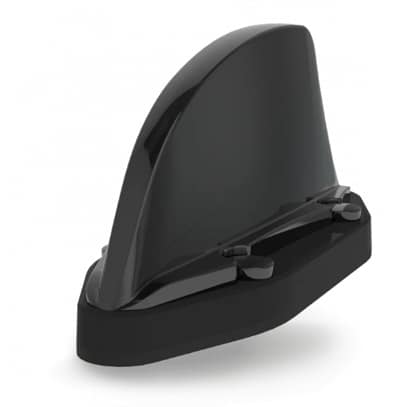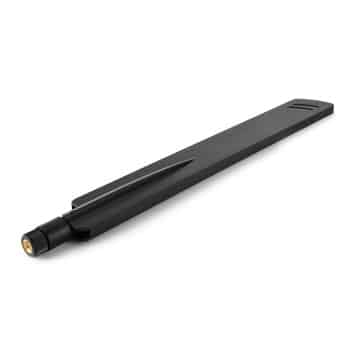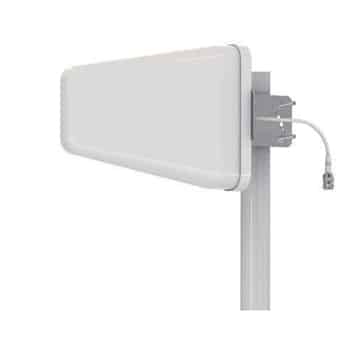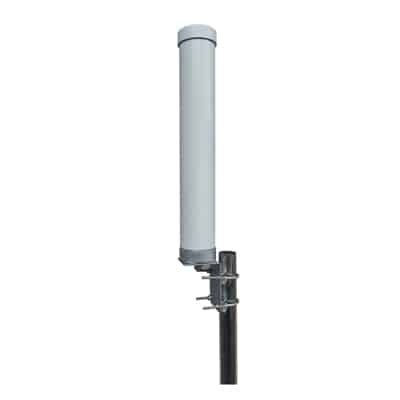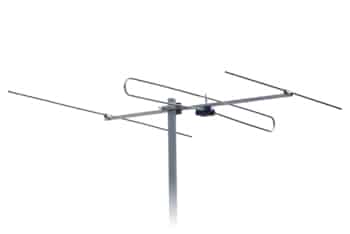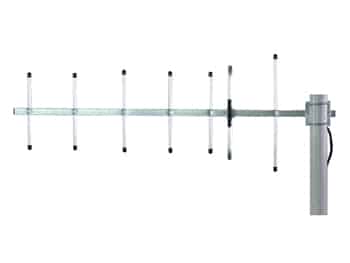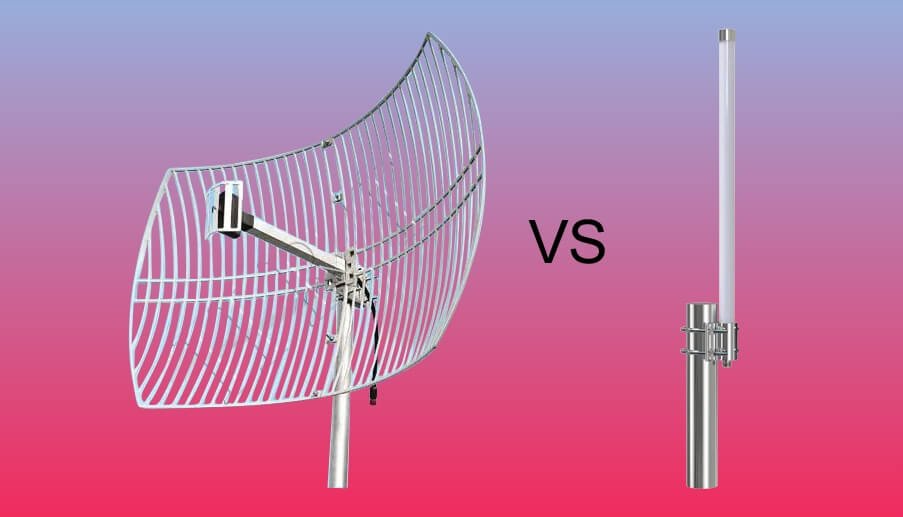
Antennas in modern communication systems are the main facilitators of radio signal transmission. The development of antenna technology over the years has impacted the growth of modern wireless communication.
There are two main types of antennas used in the industry today. They are omni-directional and directional antennas. This classification is based on the radiation plot of antennas. Omni-directional antennas have a 360-degree radiation plot while directional antennas have a radiation plot covering a constrained area or a sector of area.
In this article, we will discuss the main differences between omni-directional and directional antennas by outlining some of their advantages and disadvantages. This article will help anyone interested in utilizing an antenna for their communication system.
Table of Contents
ToggleWhat is an omni-directional antenna?
The omni-directional antenna is an antenna with a 360-degree radiation plot. These antennas transmit radio signals all over a 360-degree with uniform power. Omni-directional antennas are considered one of the most versatile antenna types due to their simple design. Moreover, installation of omni-directional antennas only requires less time and effort due to their simple and easy-to-handle design.
Omni-directional antennas are typically deployed in areas requiring wide coverage, such as dense urban environments. Due to their versatility and simplicity omni-directional antennas are prominent in many applications. These include,
- Wi-Fi routers: Omni-directional antennas are prominently used in both indoor and outdoor Wi-Fi routers. Omni-directional antennas are popular in such applications due to their wide coverage and simple design, which in return makes the routers scalable and modular.
- Cellular network towers: Some cellular network towers utilize omni-directional antennas which can provide wide coverage. However, cellular network towers that use omni-directional antennas cannot provide a wide range and are ideal for urban and suburban environments. Furthermore, these omni-directional cellular network antennas are used exclusively for short-range communication.
- FM radio antennas: Omni-directional antennas are the most used antenna type in FM radios due to their small size. These small omni-directional antennas can acquire radio signals from long distances due to the power of the transmitted signals.
- Vehicular communication networks: Due to the small size and installation feasibility, omni-directional antennas are used in vehicular communication networks. These antennas are not only used for communication but also for localization and sensing in modern self-driving cars.
- IoT applications: Another emerging application of omni-directional antennas is prominent in IoT applications due to their small and modular build. Different kinds of omni-directional antennas are used for different communication protocols used in IoT applications.
Furthermore, let us outline some of the types of omni-directional antennas:
- Monopole antennas
- Dipole antennas
- Coaxial antennas
- Ground plane antennas
What is a directional antenna?
Unlike omni-directional antennas, directional antennas only facilitate coverage over a given area or a sector of an area. However, unlike omni-directional antennas, they have a high directional gain and a wide range of coverage. Therefore, these antennas are most suitable for rural areas, where a range of coverage is critical. Moreover, directional antennas provide more interference resistance when compared to omni-directional antennas. Directional antennas come in different types and depending on the type of application varies. Some of the most prominent directional antenna types are as follows:
- Yagi-Uda antennas
- Patch antennas
- Sector antennas
- Parabolic antennas
- Dish antennas
- Log periodic antennas
- Symmetrical horn antennas
Furthermore, directional antennas are complex in design and are hard to set up, hence they are rarely used in modular designs. However, we will now look at some of the general applications of different types of directional antennas. These include:
- Cellular network base station antennas: Due to their high directional gain and power, directional antennas are widely used as base station antennas for cellular networks.
- High-gain Wi-Fi antennas: Directional antennas are used in Wi-Fi networks to facilitate high gain and directional coverage over a short distance or an area prone to interference. These antennas are usually used outdoors.
- Satellite communications: Dish directional antennas are widely used for satellite communication and broadcasting applications. These antennas can focus on a single transmission point to achieve the high gain transmission required for satellite communication.
- TV broadcasting: Yagi-Uda antennas are widely used for TV broadcasting.
- Military defense and operations: Directional antennas such as patch, horn, panel, and parabolic antennas are widely used in numerous military defense and operations.
- Point-to-point communication: Directional antennas are used for long distance point-to-point communication.
Key differences between omni-directional and directional antennas:
Now let us briefly outline some of the differences between directional and omni-directional antennas. These differences are outlined as follows:
- Radiation pattern: This is the major difference between omni-directional and directional antennas. Omni-directional antennas can transmit radio signals for 360-degree coverage while directional antennas can only cover an area or a sector of an area. However, some types of directional antennas would have different radiation patterns depending on the user requirements and the application.
- Transmission strength: Directional antennas have high signal strength when compared to omni-directional antennas. However, it varies with the application with most of cases directional antennas with high signal strength.
- Installation and setup: Omni-directional antennas are easy to set up and install when compared to directional antennas due to their simple design. Moreover, most of the directional antennas require an alignment adjustment to cover the required area of interest.
- Range of coverage and resistance to interference: Usually, directional antennas are made more resilient to interference and achieve a long coverage distance. However, omni-directional antennas do not have a long coverage distance.
Below is a table which help you understanding easlier:
| Factors | Omnidirectional Antenna | Directional Antenna |
| Direction | The radiation pattern is like a donut, send or receive signal in 360 degree | Focus power in one direction, the radiation pattern like a flashlight |
| Gain | Normal low gain than directional antenna, 12dBi is the highest at 2400MHz frequency | Much higher than omni antenna, the highest gain of 5GHz band is 34dBi |
| Installation | Omni antenna is easier than directional, it don’t need to adjust the direction | It has to point to the direction what you need correctly to achieve the best performance |
| Interference | Because it send/receive signal to/from 360 degrees, it is subject to interference from all directions | It decreased the interference from multiple direction than omni antenna |
| Coverage | Cover 360 degree area | Cover a limited area |
| Areas | Usually used in crowded places or in urban centers for point to multipoint applications | Used in long distance rural area for long range point to point applications |
Advantages and disadvantages
Let us outline some of the advantages and disadvantages of omni-directional and directional antennas. Some of the advantages of omni-directional antennas are:
- Simple design
- 360-degree wide coverage
- Easy to install and setup
- Versatile in applications such as IoT
However, there are some disadvantages of omni-directional antennas as well:
- Lower signal strength and gain
- Prone to interference
On the other hand, advantages of directional antennas include:
- Higher signal strength and gain
- Longer range of coverage
- Resilient towards interference
But they too have disadvantages such as:
- Complicated design and installation steps including alignment adjustments
- Limited coverage over the area
Choosing the right antenna for your needs
Having an overall understanding of the differences between omni-directional and directional antennas, we can now outline the main factors that are to be considered when selecting the right antenna for your application. These factors should include:
- Coverage requirements
- Signal strength and required gain
- Environmental setting
- User application
For example, directional antennas will be most suited for high gain Wi-Fi systems operating in a rural setting whereas omni-directional antennas for warehouse monitoring use dipole Wi-Fi antennas. Moreover, omni-directional antennas are most suitable for urban and sub urban environments.
Conclusion
In this article, we discussed the differences between omni-directional and directional antennas and some of their use cases. Moreover, we outline their advantages and disadvantages and provide a list of factors to consider when choosing the correct antenna.

